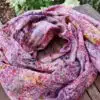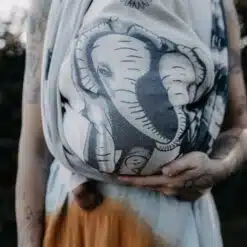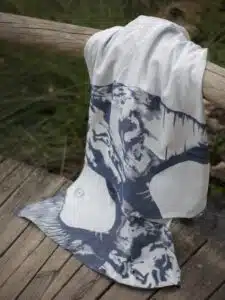Babywearing News, Winter
In Winter – How to Safely and Warmly Carry Your Baby Through the Cold Season
Winter brings a special kind of magic – crisp air, cold clarity, and the soft crunch of snow underfoot. But when carrying your baby or toddler in a wrap, ring sling, or carrier during sub-zero temperatures, you face unique challenges. It’s not just about keeping your little one warm enough, but also about ensuring you stay comfortable and that both of you are dressed to optimize body heat.
Table of Contents
Choosing the Right Carrier for Winter
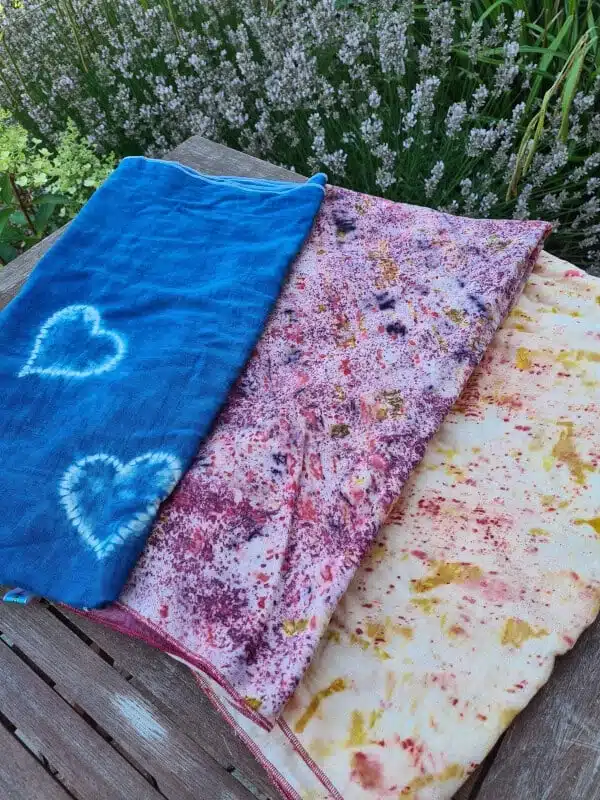
There are many ways to carry your baby close to you – from wraps to ring slings to buckle carriers. In winter, however, it’s crucial to carefully select what works best for you and your baby. A wrap or ring sling offers flexibility because you can tie it tightly, ensuring it fits snugly around your body, blocking out most of the cold. Pay attention to the material – a blend of cotton and wool is ideal for winter as it keeps warm, is breathable, and regulates moisture effectively. Buckle carriers are convenient since they’re easy to put on, but here, too, you need to consider the material. In winter, models with a fleece insert or thick lining are often the best choice. The carrier shouldn’t be too loose; the closer your baby is to your body, the more warmth you share, making your little one feel cozy and secure.
Linen Fabric
Hemp Fabric
Cotton Fabric
Hemp Fabric
How to Dress Your Baby Right

One common misunderstanding in winter is over-layering your baby inside the carrier. The issue with too many layers is that your baby might overheat, or the carrier may not fit properly. Remember, the wrap or carrier replaces one layer of clothing for your child – so dress them similarly to how you would indoors. A good rule of thumb is to start with a light wool or silk layer next to your baby’s skin. These materials regulate temperature well and keep warmth without overheating. Over that, add a second layer of cotton or a wool blend. Warm socks and a hat are essential in winter since babies lose much of their heat through their heads and feet. Don’t forget that your baby’s back and bottom need extra warmth, as these areas are less protected by your shared body heat. A snowsuit or a babywearing jacket can work wonders here.
Don’t Forget About Yourself
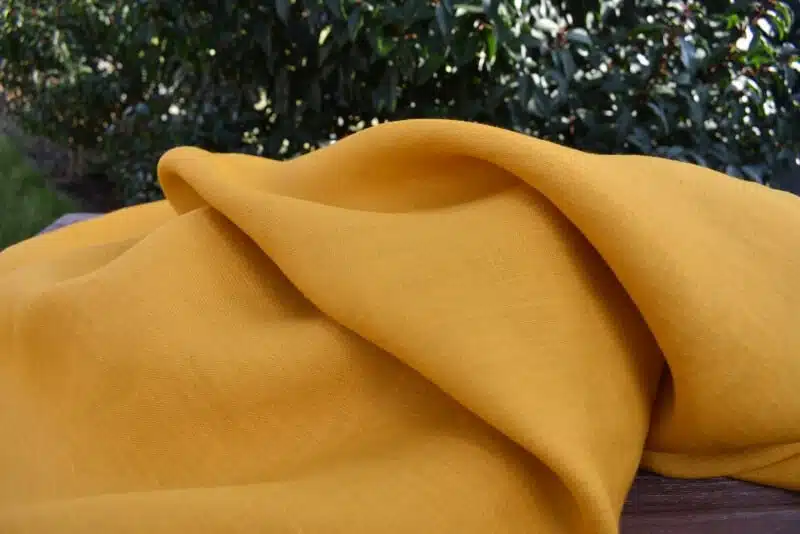
For you, the wearer, the right clothing is also key. You’ll be moving while carrying your baby, but your body will also be absorbing the warmth from your child. Wear several breathable layers to regulate your body heat. A close-fitting base layer of merino wool or technical fibers helps manage warmth and wicks away moisture. Over this, a fleece jacket or wool sweater can provide the necessary warmth without making you overheat. If you use a babywearing jacket, make sure it has enough space for both you and your baby, but isn’t too loose – you want the warmth to be kept snug between the two of you.
Hemp Fabric
Outdoor Adventures with Toddlers

Once your child can walk on their own, a new challenge arises: How to dress your toddler when they sometimes walk and sometimes want to be carried? Flexibility is key here. When your toddler is walking, they will warm up quickly. So, make sure they wear clothing that can easily be taken on and off, like an insulated but breathable winter jacket. When they want to be carried again, you can offer them an additional blanket or scarf to warm up their back. A babywearing jacket with a zip system that adapts quickly is helpful, allowing you to respond to your child’s needs easily.
Staying Safe with Proper Footwear

The right footwear is essential in winter – for both you and your child. While you should focus on wearing non-slip shoes to ensure a firm grip while carrying your child, make sure your toddler is wearing warm, waterproof boots. These should be easy to put on and take off, especially when transitioning in and out of the carrier. As for carrying positions, front-carrying is generally more comfortable in winter since it allows both of you to share warmth. If your child is older and you carry them on your back, make sure to use a sturdy tying method or carrier that distributes weight well, ensuring you stay balanced and secure.
What to Avoid During Winter

There are a few things to avoid during winter babywearing. One is putting your baby in thick snowsuits or down jackets while in the carrier. These bulky items make it almost impossible to adjust the carrier correctly, which can compromise your baby’s support. Also, avoid standing in damp or extremely cold conditions for too long. If you notice that your baby is getting cold, quickly find shelter in a warm building. A cold baby will become restless and fussy – a clear sign that they are no longer warm enough.
FAQ – Quick Answers to the Most Important Questions
1. How do I dress my baby correctly in a carrier during winter?
Don’t overdress your baby. The wrap or carrier replaces one layer of clothing. Wool or silk is best as the base layer, with a second warm layer on top. Be sure to use a warm hat and socks.
2. What’s the best carrier for winter?
A wrap or a well-fitted baby carrier made from warming materials like wool or fleece is ideal. It should fit snugly to share body warmth.
3. What should I avoid when carrying my baby in winter?
Avoid bulky snowsuits or down jackets in the carrier, as they hinder proper fit and support. Also, limit exposure to cold weather and try to avoid standing still for long periods in freezing temperatures.
4. How do I keep my baby’s face warm during winter walks?
Use a babywearing cover or a scarf to shield your baby’s face from wind and cold. Be careful not to cover their mouth and nose completely, to allow for proper airflow. A hat with ear protection is also crucial.
5. Is back carrying in winter safe?
Yes, but front-carrying is generally recommended in colder months as it allows you to share more body heat. If you do choose to back-carry, ensure your child is dressed warmly, especially their back, and use a sturdy carrier that keeps them close to your body.





